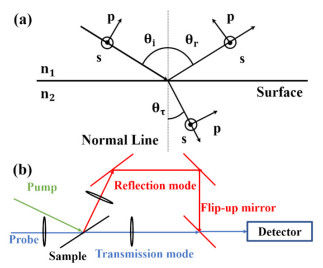Reflection 2D
- ronnamuddiman448tf
- May 11, 2022
- 4 min read

Reflection 2D Torrent [Updated] 2022 . Reflection 2D is a hands-on applet designed to show how a point light source can be reflected into the viewer's eye. The 2D reflection equation is used in a computer program that is available from: . This is also available on the Web: . The user can rotate the scene and use the mouse to change the light source position and direction. After adjusting the light source, the reflection vector will be recalculated based on the new parameters and will be drawn on the screen. All the equations are automatically updated when the user changes the scene. . The equation is, as expected, very similar to the 1D version: R=2*(L-N*L)L/N . The equation assumes an object is very far from the source and is perpendicular to the source-object vector. . Examples of images that can be generated are: . Reflections from a plane . Reflections from a sphere . Reflections from a non-spherical object . Reflections from a cylinder . Reflections from an oriented object . A traditional black and white reflection image . Reflections from a subject with a point light source . Reflections from a subject with a line light source . Reflections from a subject with a surface light source . Reflections from a subject with a plane light source . Reflections from a subject with a surface light source . Reflections from a subject with a line light source . Reflections from a subject with a surface light source . Reflections from a subject with a point light source . Reflections from a subject with a line light source . Reflections from a subject with a surface light source . Reflections from a subject with a point light source . Reflections from a subject with a line light source . Reflections from a subject with a surface light source . Reflections from a subject with a point light source . Reflections from a subject with a line light source . Reflections from a subject with a surface light source . Reflections from a subject with a plane light source . Reflections from a subject with a line light source . Reflections from a subject with a surface light source . Reflections from a subject with a plane light source . Reflections from a subject with a line light source . Reflections from a subject Reflection 2D Crack The 2D Reflection applet is an interactive illustration letting users reposition a light source and automatically recalculate the reflection vector. The standard equation is used with N, L and R for, respectively, the surface normal, normalized direction to a light source, and normalized reflection of L off of a surface. All equations are automatically updated with a user's changes to the illustration. A series of tips/concept explanations are available. Take Reflection 2D for a test drive to see what it;s all about! The standard equation for the specular reflection is: N(reflection_direction) = N(normal_direction) + R(normal_direction) * L(incident_light) Reflection is a vector result of an angle that light reflects at a surface, which is calculated by taking the sum of two components. The first component is the vector perpendicular to the surface, which is simply the surface normal. The second component is the vector that is calculated from the reflection of the light off of the surface. This vector is defined as: where R(normal_direction) is the reflectance for a normal vector at the direction of the surface and L(incident_light) is the light source direction. The surface normal is the direction that is perpendicular to the surface. The direction that the light source is coming from is also normal, and the normal is usually calculated by averaging the vectors of all the points on the surface. The direction of the light source is perpendicular to the surface, but it can vary. This means that if the surface is perpendicular to the light source, the angle of the light source is 0, and if the light source is coming from a direction on the surface, it's normal to the surface. The surface normal and incident light vectors are usually not perpendicular to each other, so if they are, the surface is specular and reflective. This is not always the case, for example, if the incident light vector is parallel to the surface, the surface is not specular because it doesn't act like a mirror. If the surface normal and incident light vectors are not perpendicular to each other, the surface is not specular because the vector cannot be directly summed. For non-specular surfaces, N and L are no longer perpendicular to each other, which means that the entire vector cannot be summed directly. The result of this equation is the vector perpendicular to the surface normal, L, and the light source, R. The length of the vector is the angle that the vector makes with the surface normal. If you find that the vectors are too short, try adjusting the angle and/or the surface normal angle. How the Specular Reflection equation is used: When users calculate the reflection 8e68912320 Reflection 2D Crack ----------------------------------------------------------- !ENTRY macro REFLECTION !TIME 1s !COM !COPY !SUBALBUMB !COPY !COPYL !COPYZ !UPLOAD !TICK !CLOSE !ENTRY text REFLECTION !TIME 10s !NUMBER 1.0 !FRONT !UPLOAD !COM !COPY !N !R !L !N !R !L !R !L !R !L !R !L !R !L !R !L !R !L !R !L !R !L !R !L !R !L !R !L !R !L !R !L !R !L !R !L !R !L !R !L !R !L !R !L !R !L !R !L !R !L !R !L !R !L !R !L !R !L !R !L !R !L !R !L !R !L !R !L !R !L !R !L !R !L !R !L !R !L !R !L !R !L !R !L !R !L !R !L !R !L !R !L !R !L !R !L !R !L !R !L !R !L !R !L !R !L !R !L !R !L !R !L !R !L !R !L !R !L !R !L !R !L !R !L !R !L !R !L !R !L !R !L !R !L !R !L !R What's New in the Reflection 2D? System Requirements For Reflection 2D: Mac or Windows Laptop or Desktop, or at least an adequate internet connection Internet Explorer 9 or Chrome or Firefox Adobe Flash Player 10 Resolution 1280 x 720 pixels (Or greater) and a mouse A mouse with a scroll wheel Windows XP, Vista or Windows 7 (or higher) Strictly forbids tablets Not recommended for Mobile phones ModDB Trademark: Copyright 2000-2018, Valve Corporation. All rights reserved. © 2015 Valve Corporation. All
Related links:

Comments